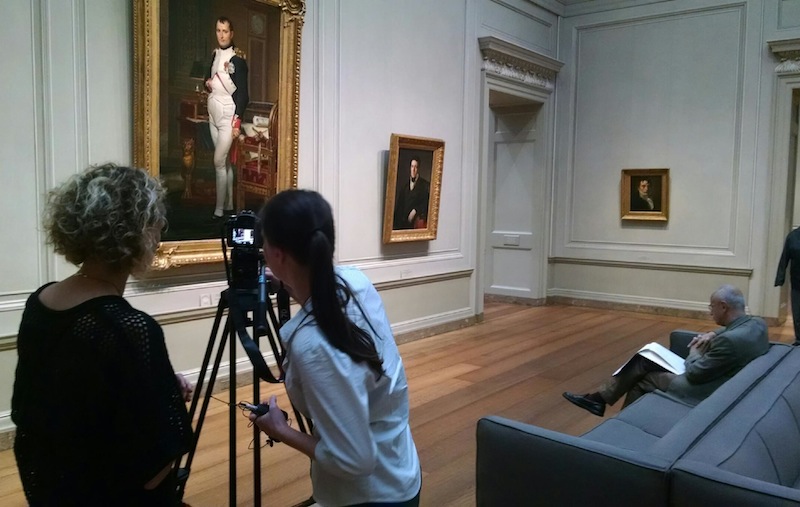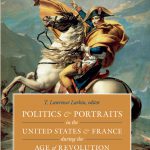Anthology release: Spring 2019
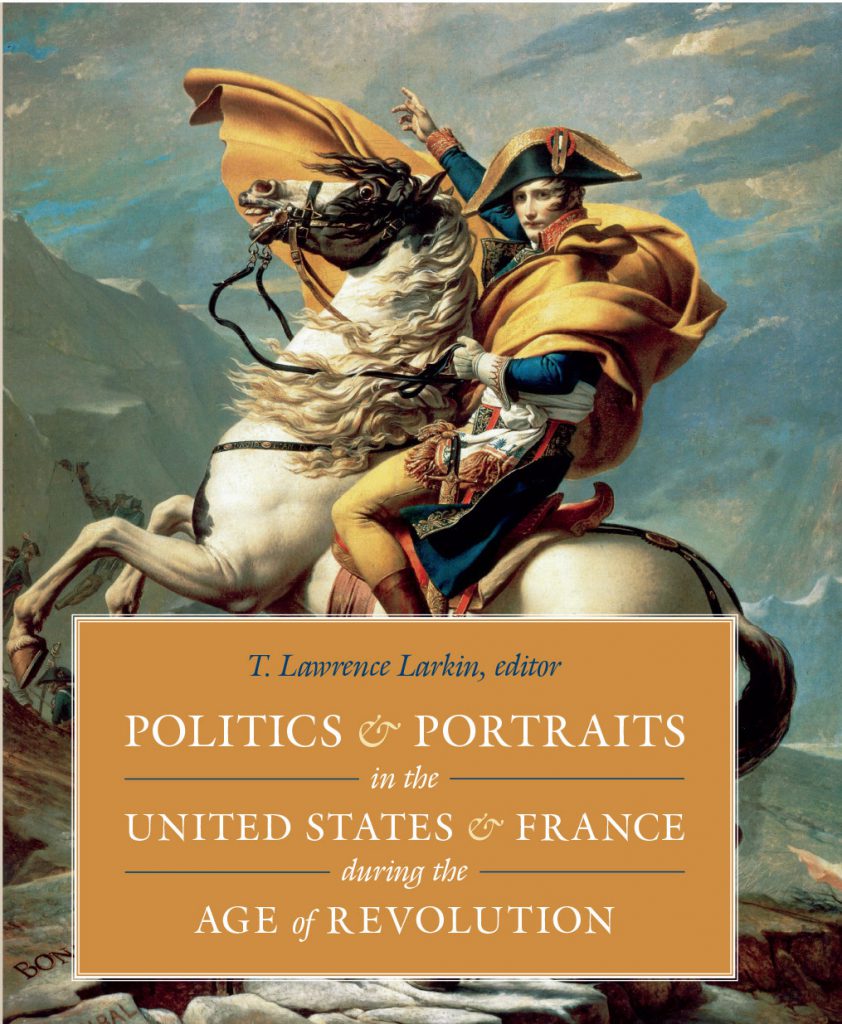
Politics & Portraits in the United States & France during the Age of Revolution is an anthology of essays prepared by portrait scholars from the United States, Canada, France, and Germany and published by the Smithsonian Institution Scholarly Press to mark the bicentennial of the burning of the federal buildings and the loss of national treasures at Washington, D.C., on the night of 24-25 August 1814. It explores the way portraits intersected with politics during the Revolutionary and Imperial Eras in The United States and France. Between the War of Independence of 1776 and the War of 1812, the United States maintained a complicated and tense political relationship with Britain and France, affecting patterns of trade and diplomacy, cultural representation, and consumption on both sides of the Atlantic. The transition from monarchical to republican forms of government was accompanied by a shift from aristocrats to citizens as the primary patrons, artists, subjects, and viewers of portraits. For this reason, images of heads if state, delegates, and their families often reveal an uneasy integration of old aristocratic forms and new republican values. The essays in this book examine representations of major figures such as Louis XVI and Marie-Antoinette, George Washington, Napoleon Bonaparte, and James Madison, among others. They also explore how artists portrayed royal, republican, and imperial heads of state to promote authority; national, state, and provincial delegates to express the values of a faction, constituency, or class; and prominent merchants to depict the burgeoning influence of the citizen.
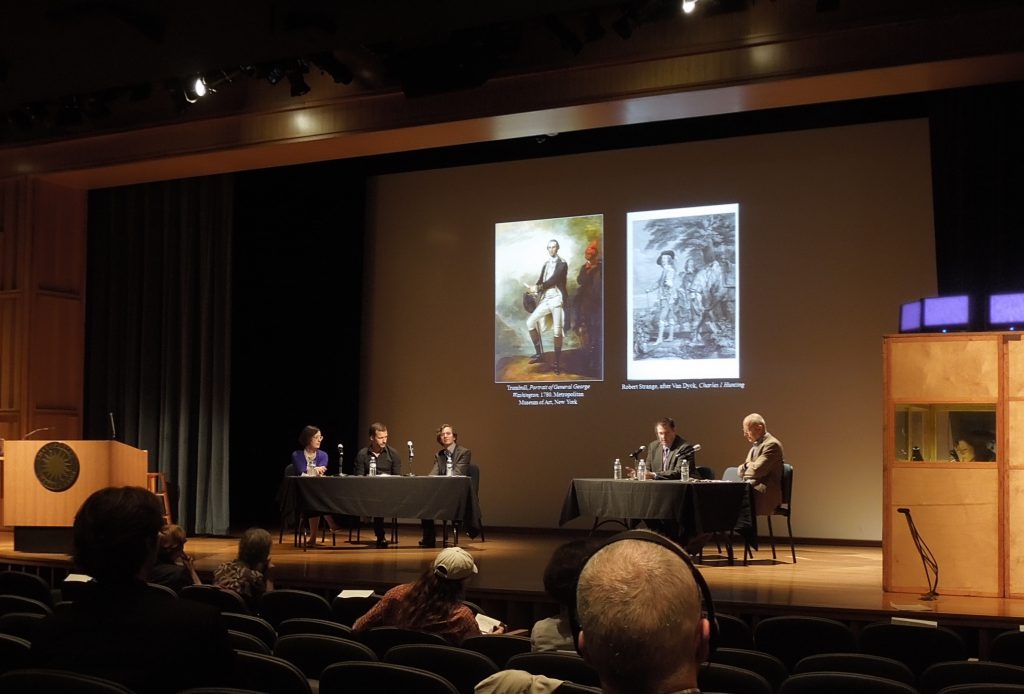
Table of Contents
Preface T. Lawrence Larkin
Introduction T. Lawrence Larkin
PART I: IMAGES OF AUTHORITY IN FRANCE AND THE UNITED STATES
Part I Introduction T. Lawrence Larkin
The U.S. Congress’s State Portraits of Louis XVI and Marie-Antoinette: The Politics of Display and Displacement at the Capitol, 1800-1814 T. Lawrence Larkin
Bonaparte as a Republican David O’Brien
Man + Horse: Repurposing the Equestrian Portrait in the Post-Revolutionary Era Heather McPherson
PART II: THE PORTRAIT AS DIPLOMATIC GIFT
Part II Introduction Brandon Brame Fortune
Gilbert Stuart’s “Lansdowne” Portrait of George Washington: From Diplomatic Gift to State Portrait Ellen G. Miles
Portraits for Diplomacy: Gilbert Stuart’s Pendant Portraits of Thomas Jefferson and James Madison Gaye S. Wilson
Rivalries and Dissensions within the Maison de l’Empereur: Napoleon’s Portraitists and the Production of Diplomatic Gifts Cyril Lécosse
PART III: REPUBLICANISM AND THE POLITICIAN’S PORTRAIT
Part III Introduction Philippe Bordes
Faces of the Nation: Physionotrace Portraits and the Invention of Political Modernity Guillaume Mazeau
Representing the Representatives: Portraiture and Sovereignty in Revolutionary France, 1789-1795 Gerrit Walczak
Signs of Power: Bonaparte and the Concordat of 1801 Kathryn Calley Galitz
PART IV: PATRIOTISM AND THE FAMILY PORTRAIT
Part IV Introduction Amy Freund
Woman on a Wire: How Marie-Antoinette, d’Angiviller, and Vigée Le Brun Confounded Critics by Balancing Majesty and Maternity at the Salon of 1787 T. Lawrence Larkin
Architectural Portraits: Mount Vernon, Monticello, and La Grange Kevin D. Murphy
Politicizing Portraiture: Family Portraits and Visual Rhetoric in Revolutionary France Marlen Schneider
PART V: THE “FACE” AND “BODY” OF EARLY REPUBLICAN CAPITAL CITIES: PARIS, PHILADELPHIA, NEW YORK, AND WASHINGTON
Part V Introduction Margaretta M. Lovell
Urban Portraits, Two Centuries Ago: Faces, Bodies, and Footprints Jeffrey A. Cohen
From Portrait to Plan: Mapping Capital Cities in France and the United States Min Kyung Lee
Bibliography
About the Contributors
Index
Design by Julie Allred of BW&A Books
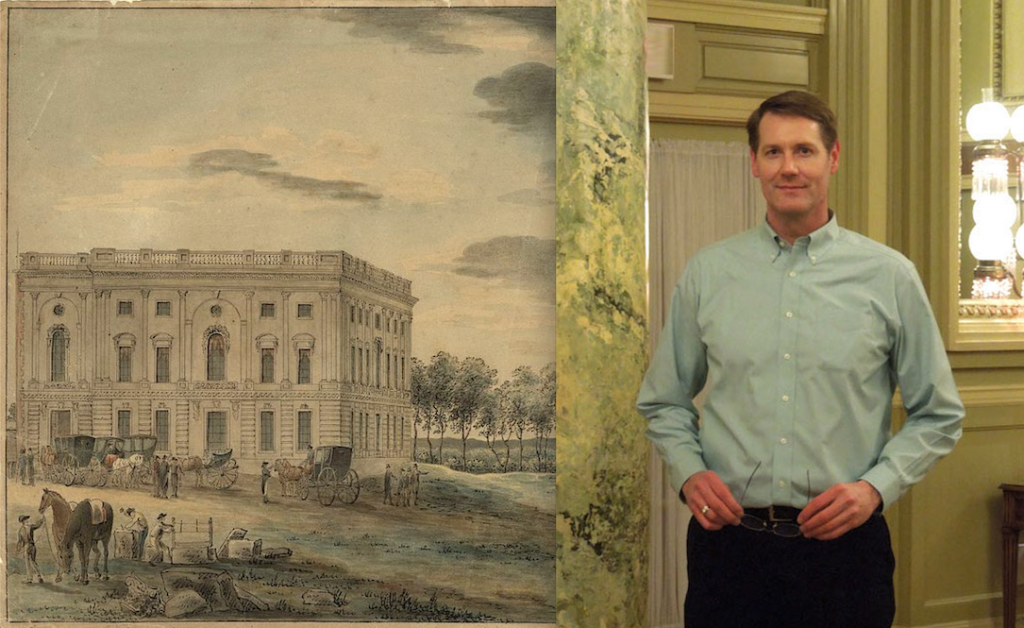
Early assessments:
“The essays…are all extremely accessible but also substantial in scholarship and argument….A fair number of the essays are about closing down on the subject—explaining and resolving it fully (e.g. Miles, Larkin)—so it was good to have an example of an essay (Cohen) that opened everything up and left the subject unresolved….There is a larger audience built into the book because it addresses both Americanists and French modernists, art and architectural historians, and cultural historians of the period.”
– E. Bruce Robertson, University of California
“The book’s introduction by Larkin provides historical context and discusses the purpose and structure of the book….The subjects of the portraits in the essays range from kings and queens to generals, politicians, and presidents, in addition to equestrian, family, and group portraits. Portraits of Napoleon Bonaparte and George Washington dominate. Interestingly, parts four and five present architecture and urban planning as a form of portraiture, with Mount Vernon, Monticello, and La Grange as reflective of their owners’ politics, and with ‘political portraiture…as a powerful metaphor to describe urban space’.…The documentation of the book is strong, with two to three pages of endnotes following each essay….Some of the plates are repeated in later chapters, which is helpful in allowing the essays to stand on their own without the need to flip back or forth to look for relevant plates….Overall it is an impressive work of scholarship and is a fine addition to the study of portraits and politics in the late eighteenth and early nineteenth centuries in the United States and France.”
– Virginia Feher, University of North Georgia
